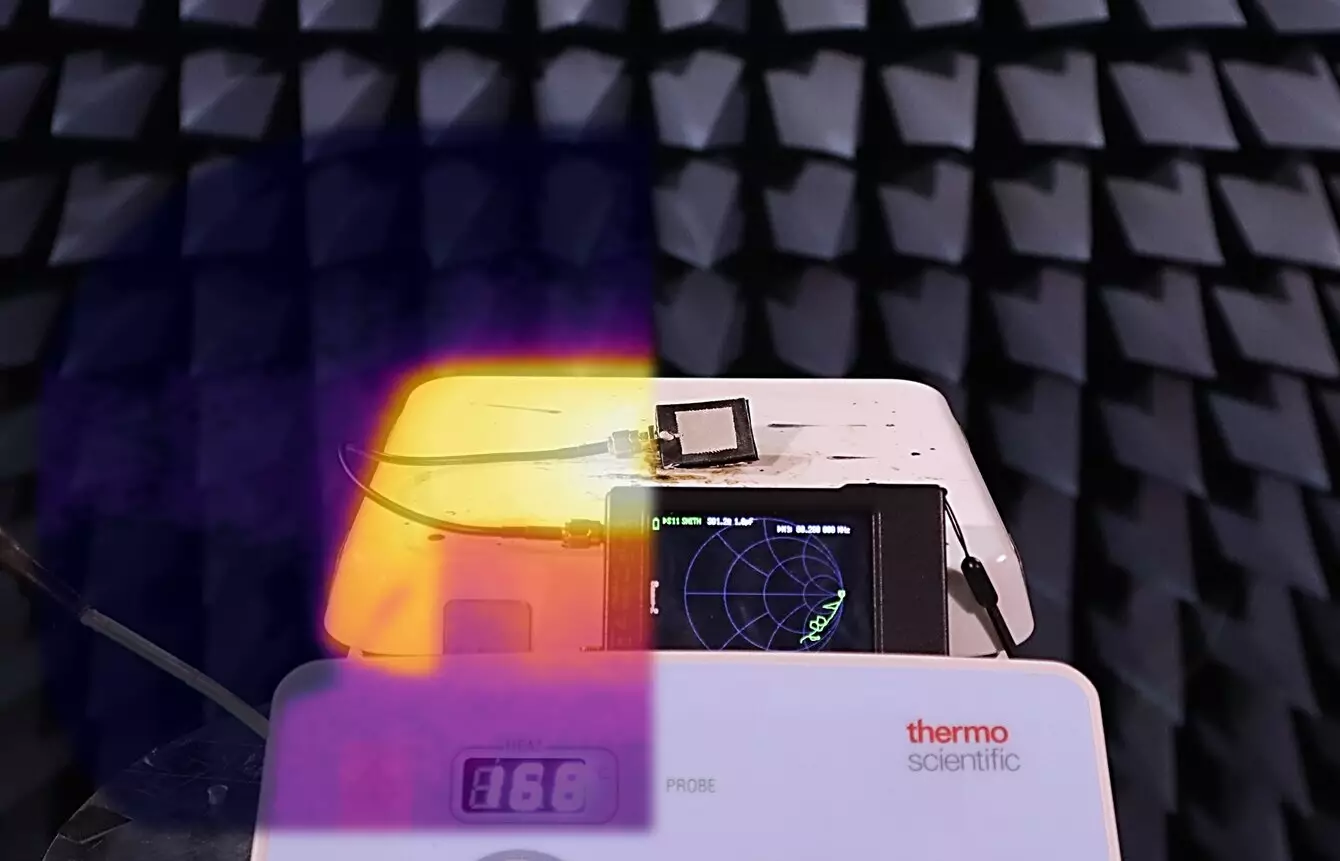Engineers from UK universities have revolutionized temperature measurement with the development of a groundbreaking soft and flexible “smart skin” sensor. Unlike traditional thermistors, this sensor, composed of carbon fibers and silicon rubber, operates without the need for battery power or onboard processing. Published in Nature Communications, the team’s paper titled “Wide-range soft anisotropic thermistor with a direct wireless radio frequency interface” details the sensor’s ability to absorb and reflect radio-frequency signals in response to atmospheric temperature fluctuations. This capability allows for temperature sensing over an unprecedented range. With the global temperature sensor market valued at $5–8 billion, this innovation has the potential to revolutionize the industry.
The soft and flexible temperature sensor developed by a team led by researchers from the University of Glasgow has shattered previous limitations by reading temperatures from 30°C to over 200°C. This wide range is a significant achievement in temperature sensing technology. By eliminating the need for an array of different thermistors, this breakthrough promises to make future wireless sensors more cost-effective and sustainable. With fewer devices required to cover a broader sensing range, the manufacturing and maintenance costs associated with temperature sensing can be greatly reduced.
The researchers employed innovative manufacturing techniques to create their flexible sensor. Using a 3D printer, they molded the composite material, integrating it into various components such as antennas, RFID labels, and resonators. These flexible substrates, resembling human skin, enable the design of large-area antennas that emit highly temperature-sensitive signals. The combination of common silicone and carbon fibers allows for easy shaping and customization to fit specific applications. The simplicity and versatility of this manufacturing process open the door for widespread adoption of the technology.
Not only does the soft and flexible temperature sensor offer an unprecedented sensing range, but it also exhibits impressive durability. The sensor can bend and stretch thousands of times without compromising its sensitivity to temperature. This resilience ensures its longevity and reliability in various environments and applications. The collaboration with researchers from the University of Southampton further bolstered the sensor’s capabilities, as the stretchable material easily integrates into bendable electronics and smart fabrics. The team’s ability to maintain a consistent response even after repetitive cycles of bending and stretching is a testament to the sensor’s exceptional quality and reliability.
The composite material possesses “anisotropic” properties that influence its interaction with electric fields in different directions. This characteristic suggests that further advancements can be made to fine-tune the sensor’s sensitivity to specific wireless signals. The team from Loughborough University contributed to the project by analyzing the electrical properties of the new material. Their research demonstrated the sensor’s functionality up to a frequency of 26 GHz, delving into the spectrum of 5G communications technologies. This flexibility, both in terms of physical manipulation and signal reception, opens up a wide range of potential applications for the sensor in various fields.
The implications of this breakthrough extend far beyond temperature sensing. The technology serves as a foundation for diverse applications, including vital sign monitoring, radar sensing, satellite communications, and the future development of 6G wireless networks. The versatile nature of the sensor paves the way for new advancements in sustainable and biodegradable wireless electronics. Dr. Mahmoud Wagih, the research fellow and lecturer at the University of Glasgow leading this study, is already spearheading a new research project to explore these exciting possibilities. With a focus on functional and natively stretchable materials for body-centric wireless sensing, Dr. Wagih’s research promises to build upon the team’s already impressive track record in cutting-edge RF sensing technologies.
The development of the soft and flexible “smart skin” sensor marks a significant milestone in temperature sensing technology. Its wide sensing range, durability, and adaptability make it a game-changer for various industries. By simplifying temperature sensing and reducing the number of devices required, this innovation has the potential to reshape the landscape of wireless sensors. As researchers continue to explore its capabilities and applications, the future of this technology looks promising, bringing us one step closer to a more connected and technologically advanced world.



Leave a Reply